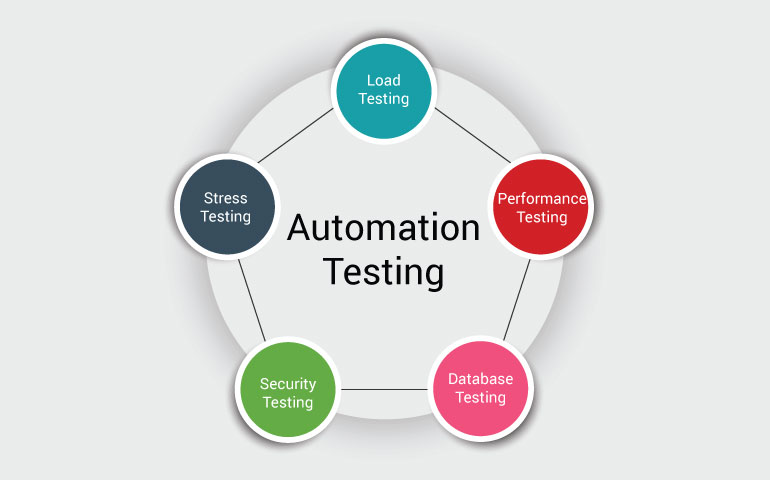From Guidebook to Automated Screening: A Comprehensive Guide to Transitioning Efficiently and Efficiently
In the realm of software testing, the change from manual to automated processes has actually become an increasingly important transition for organizations seeking to boost effectiveness and precision in their screening techniques. The trip from handbook to automated testing is not without its obstacles, yet when come close to strategically and with a clear strategy in mind, the advantages can be substantial.
Advantages of Automated Testing
Automated screening provides countless benefits, boosting effectiveness and precision in software application development processes. Automated examinations can be run all at once on several tools and operating systems, substantially speeding up the screening stage contrasted to hand-operated screening.
In addition, automated screening makes sure a greater degree of accuracy in discovering problems. Given that automated tests comply with predefined scripts, human mistake is decreased, resulting in even more dependable examination results. Uniformity in screening is also boosted, as automated examinations perform the same steps precisely each time they are run. This consistency is essential in ensuring that all capabilities of the software program are thoroughly checked, reducing the likelihood of undiscovered insects sliding with to production.
Picking the Right Tools

First of all, examine your demands and goals. Comprehend the extent of your task, the innovations involved, and the ability collection of your group. This analysis will certainly help you figure out the abilities and attributes you call for in your screening devices.
Secondly, think about the compatibility of the tools with your existing processes and systems. Smooth combination with your existing software development lifecycle is vital to ensure a smooth shift to automation.
In addition, assess the scalability and versatility of the devices. As your testing requires evolve, the devices must be able to adjust and fit changes successfully.
Last but not least, aspect in the assistance and community around the devices. When carrying out automated testing, robust assistance and an active user area can supply useful resources and help. By very carefully considering these facets, you can pick the right tools that align with your needs and established the stage for an effective shift to automated screening.
Composing Reliable Test Scripts

When crafting examination manuscripts, it is necessary to consider the particular needs of the software program being evaluated and make certain that the scripts attend to all crucial functionalities. Clear and detailed calling conventions for examination scripts and examination instances can improve readability visit this site and maintainability. Furthermore, integrating error handling devices within the examination manuscripts can assist in find more information recognizing and attending to concerns without delay.
In addition, arranging test manuscripts into modular parts can boost reusability and scalability, decreasing redundancy and enhancing efficiency in examination script upkeep. Regular reviews and updates to examine manuscripts are essential to keep rate with advancing software demands and capabilities. By complying with these principles, testers can develop robust and reliable test scripts that contribute dramatically to the success of automated screening processes.
Integrating Automation Into Workflows
By effortlessly integrating automated testing devices like Selenium or Appium into the software program development lifecycle, groups can accomplish faster feedback on code adjustments, leading to quicker insect detection and resolution. This combination allows for continual screening throughout the development procedure, making sure that any kind of issues are determined early on, resulting in greater software program high quality. Appropriate combination of automation devices calls for collaboration between growth, testing, and operations teams to establish a unified workflow that optimizes efficiency and efficiency in delivering high-quality software program products.
Guaranteeing a Smooth Shift
Effectively transitioning to automated screening includes thorough planning and mindful implementation to lessen disruptions and maximize effectiveness in the software program growth procedure - automation testing. To make sure a smooth shift, it is crucial to begin by conducting an extensive evaluation of the current testing procedures and recognizing areas where automation can bring the most substantial benefits. Involving with all stakeholders early on while doing so, consisting of programmers, testers, and job managers, is important for amassing support and buy-in for the automation campaign
Communication is vital during this shift phase. Clear interaction of the objectives, benefits, and assumptions of automated screening assists to manage any kind of resistance or worries that might develop. Additionally, giving sufficient More Bonuses training and sources for staff member to upskill in automation devices and strategies is important for guaranteeing a successful shift.

Final Thought
In conclusion, transitioning from handbook to automated screening offers various advantages, consisting of raised performance and integrity. By picking the ideal tools, composing efficient test scripts, and integrating automation seamlessly into workflows, companies can make sure a effective and smooth transition. It is necessary to welcome automation as a useful property in software program testing processes to boost overall top quality and productivity.
In the world of software testing, the change from manual to automated procedures has actually ended up being a progressively important transition for organizations looking for to enhance performance and accuracy in their testing techniques. Automated examinations can be run at the same time on numerous gadgets and running systems, significantly speeding up the screening phase compared to manual screening. Consistency in screening is additionally enhanced, as automated tests implement the exact same steps specifically each time they are run.To make sure the successful execution of chosen testing devices, the development of effective examination scripts plays a crucial function in validating the capability and performance of automated procedures - automation testing. By complying with these concepts, testers can produce robust and efficient test manuscripts that contribute dramatically to the success of automated testing procedures